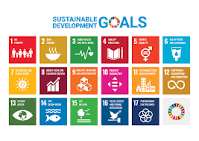DREAMING BIG, PLANNING SMALL: A YOUTH IDENTITY CRISIS?
In today’s rapidly
changing world, young people are often encouraged to dream big—to envision bold
futures filled with success, innovation, and meaningful impact. Yet, amid this
encouragement, many youth find themselves trapped in a paradox: they harbor
ambitious dreams but take hesitant, small steps toward realizing them. This gap
between grand aspirations and cautious planning reflects a deeper identity
crisis faced by today’s youth, a struggle shaped by societal pressures, economic
uncertainties, and shifting cultural values.
For
many young people, especially in countries like Nepal where traditional
expectations coexist with modern opportunities, the journey to adulthood is
fraught with contradictions. On one hand, they are inspired by stories of
entrepreneurs, leaders, and creatives who have transformed their dreams into
reality. On the other hand, they confront a reality often marked by limited
resources, family expectations, and societal constraints. This tension between
dreaming big and planning small reflects the broader challenge of forming a
coherent sense of identity in a world that demands both innovation and
conformity.
The
youth identity crisis can be understood as a struggle to reconcile individual
desires with collective expectations. In Nepalese society, where familial bonds
and community ties are strong, young people often feel the weight of
obligations—whether it is to pursue certain careers, uphold cultural
traditions, or contribute financially to their families. These responsibilities
can limit the freedom to explore personal passions fully. Consequently, many
young people settle for safer, incremental steps rather than daring leaps,
fearing failure or disapproval.
Economic
realities also play a significant role in shaping this cautious approach. With
rising unemployment and competitive job markets, young people may find it
difficult to take risks or invest in uncertain ventures. The pressure to secure
a stable income quickly often discourages long-term planning or experimentation.
Even those with visionary ideas might lack the necessary support systems—such
as access to capital, mentorship, or education—to translate their dreams into
actionable plans. This economic constraint contributes to a sense of
frustration and stagnation, deepening the identity dilemma.
Moreover,
the pervasive influence of social media and globalization adds layers of
complexity. While exposure to diverse lifestyles and success stories can
inspire youth to dream big, it can also heighten feelings of inadequacy or
confusion. The constant comparison with peers or celebrities may create
unrealistic expectations, making personal goals seem unattainable. This digital
landscape can blur the lines between genuine aspirations and superficial
desires, complicating the process of authentic self-discovery.
The
educational system plays a crucial role in this dynamic. Often focused on
standardized testing and rigid curricula, it may fail to equip young people
with the critical thinking, creativity, and life skills necessary for effective
planning and self-realization. Without opportunities to experiment, take
initiative, and learn from failure, youth may lack confidence in their ability
to pursue ambitious goals. This educational gap reinforces the tendency to opt
for safe, short-term decisions rather than bold, strategic ones.
Psychologically,
the youth identity crisis can manifest as anxiety, self-doubt, and a sense of
aimlessness. The clash between internal dreams and external realities can
create confusion about one’s purpose and direction. Young people may feel stuck
between wanting to honor their heritage and forge new paths, between personal
desires and social expectations. This internal conflict often leads to
indecision, procrastination, or even disengagement from goal-setting
altogether.
Yet,
within this crisis lies potential for growth and transformation. Recognizing
the gap between dreaming big and planning small can prompt critical reflection
and dialogue among youth, families, educators, and policymakers. It calls for
creating environments that encourage both aspiration and practical
skill-building, where young people feel supported to take calculated risks and
learn from setbacks.
Encouraging
incremental planning does not mean abandoning big dreams. Rather, it highlights
the importance of breaking down ambitious goals into manageable steps,
developing resilience, and fostering a growth mindset. Mentorship programs,
entrepreneurship training, and mental health support can empower youth to
navigate uncertainty while staying connected to their dreams. Furthermore,
fostering open communication within families and communities can help balance
traditional values with individual aspirations, reducing the pressure to
conform at the expense of self-expression.
In
conclusion, the youth identity crisis characterized by dreaming big but
planning small is a reflection of complex social, economic, and cultural
forces. It challenges young people to find coherence between their visions and
actions, between who they are and who they want to become. Addressing this
crisis requires more than individual effort; it demands collective commitment
to nurturing environments where dreams are nurtured with realistic planning and
unwavering support. Only then can youth fully realize their potential and
contribute meaningfully to the future.

Comments
Post a Comment